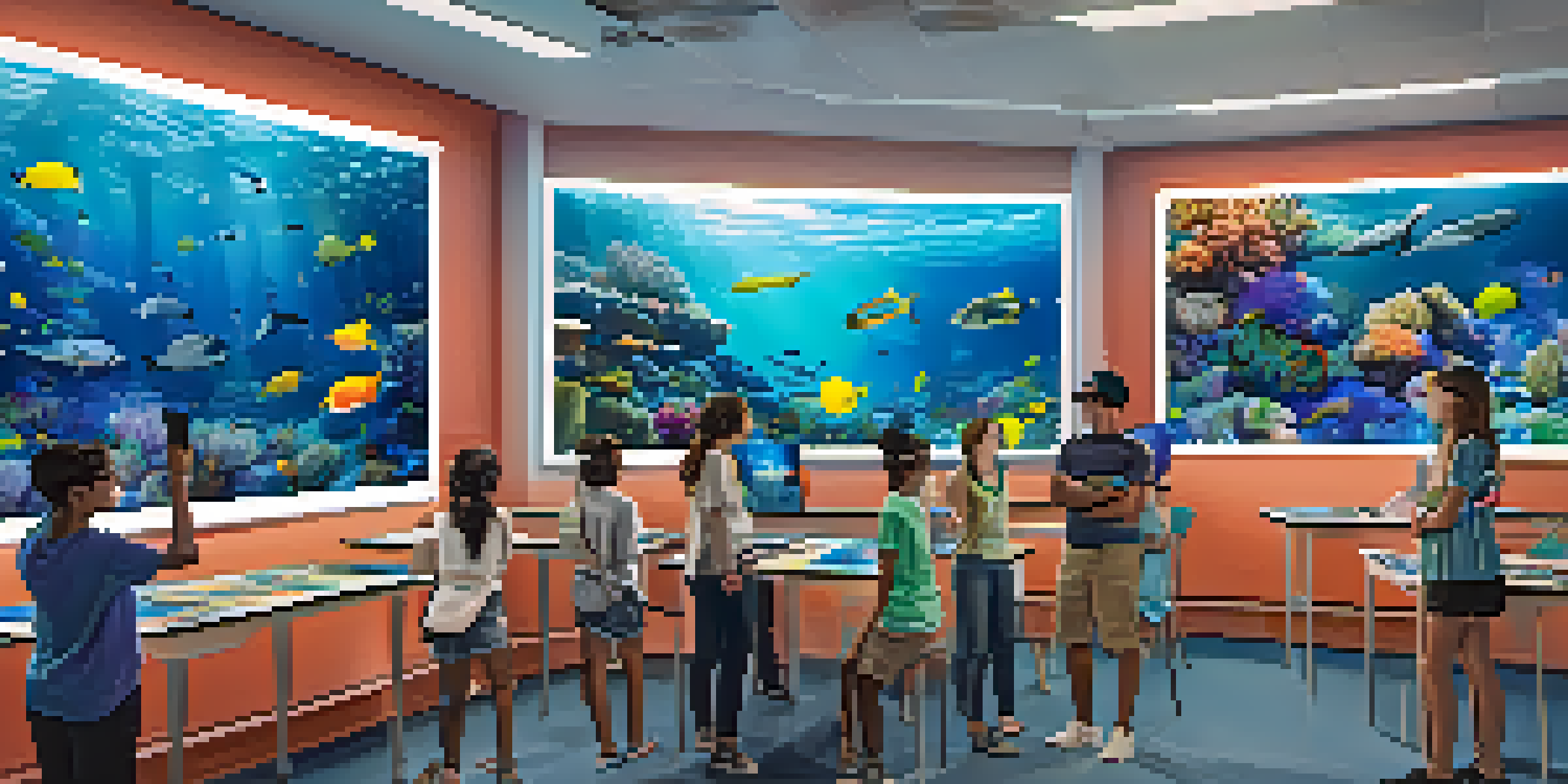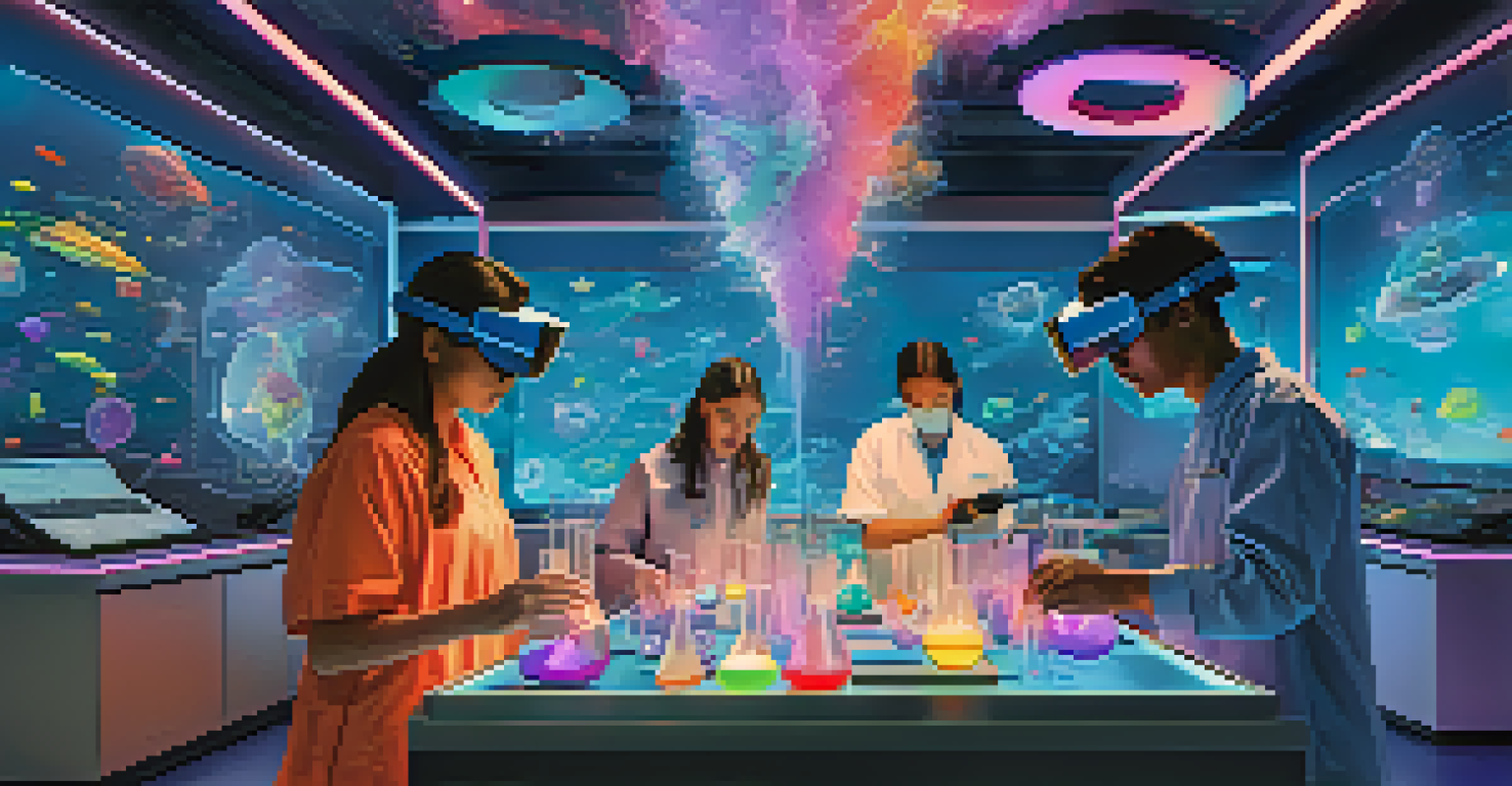The Impact of Virtual Reality on Learning Engagement

Understanding Virtual Reality in Education
Virtual reality (VR) is not just a buzzword; it's a transformative tool in education. By immersing students in interactive environments, VR allows them to experience concepts firsthand, rather than just reading about them. Imagine studying marine biology while exploring a coral reef, all from your classroom! This level of engagement can spark curiosity and foster a deeper understanding of complex subjects.
Virtual reality is not just a technology; it’s an experience that enhances learning and engages students in ways that traditional methods cannot.
The technology behind VR has evolved significantly, making it more accessible than ever. With affordable headsets and user-friendly software, educators can seamlessly integrate VR into their teaching methods. This opens up a world of possibilities, allowing teachers to tailor experiences that cater to various learning styles and preferences.
As we embrace this technology, it's essential to recognize its potential to bridge gaps in traditional learning. By providing students with immersive experiences, VR can make education more inclusive, ensuring that all learners have the opportunity to thrive. It's not just about technology; it's about enhancing the educational journey for everyone.
Enhancing Engagement Through Immersive Experiences
One of the most significant impacts of VR in education is its ability to enhance student engagement. Traditional methods often struggle to keep students focused, but VR captivates their attention by creating an interactive environment. When learners are actively participating in their education, they're more likely to retain information and develop critical thinking skills.

Consider a history lesson where students can walk through ancient Rome or witness a reenactment of a pivotal battle. Such experiences provide context and relevance that textbooks simply can't offer. This immersive approach not only stimulates interest but also encourages students to explore and ask questions, deepening their understanding of the material.
VR Enhances Engagement in Learning
By creating immersive environments, VR captivates student attention and fosters a deeper understanding of complex subjects.
Moreover, VR can cater to diverse learning styles. Visual learners benefit from vivid imagery, while kinesthetic learners thrive in hands-on environments. By engaging multiple senses, VR fosters a rich learning experience that can motivate students to delve deeper into subjects they might otherwise find dull.
Fostering Collaboration and Social Interaction
VR isn't just about individual experiences; it also promotes collaboration among students. Many VR platforms allow multiple users to interact within the same virtual environment, encouraging teamwork and communication. This social aspect can help build important skills, such as problem-solving and critical thinking, as students work together to navigate challenges.
The future of education is not about what students learn, but how they learn it. Virtual reality gives them the tools to explore and create.
Imagine a group project where students collaborate in a virtual science lab, conducting experiments and sharing findings in real-time. This not only makes learning more enjoyable but also mirrors real-world scenarios where teamwork is essential. By fostering these collaborative experiences, VR prepares students for the demands of the modern workplace.
In addition, these shared experiences can help break down social barriers. Students from different backgrounds and abilities can come together in a safe space, learning from one another while developing empathy and understanding. This inclusivity is a vital component of holistic education, making VR a valuable tool for building community within classrooms.
Improving Retention and Knowledge Application
Research has shown that immersive experiences significantly boost information retention. By actively engaging with the material, students are more likely to remember what they've learned and apply that knowledge in practical situations. In VR, the hands-on approach enables learners to experiment and make mistakes in a risk-free environment, reinforcing their understanding.
For instance, medical students can practice surgeries in a virtual setting, gaining valuable experience without endangering patients. This application of knowledge is crucial in fields where practical skills are paramount. By bridging the gap between theory and practice, VR enhances the educational experience and prepares students for real-world challenges.
Personalized Education Through VR
VR allows educators to tailor learning experiences to individual student needs, making education more accessible for everyone.
Ultimately, the ability to apply knowledge is the hallmark of effective learning. When students can draw connections between what they learn in VR and their everyday lives, they're more likely to be motivated and engaged. This leads to a more profound educational impact, setting them up for success in their future endeavors.
Tailoring Learning Experiences to Individual Needs
Every student learns differently, and VR provides an opportunity to personalize education. With customizable VR experiences, educators can adapt lessons to meet the unique needs of each student. This tailored approach can be especially beneficial for students with learning disabilities or those who may struggle in traditional classroom settings.
For example, a student with dyslexia might find reading challenging, but in a VR environment, they could engage with the material in a more interactive way. By immersing themselves in a story or scenario, they can grasp concepts that may have been difficult to understand through text alone. This flexibility allows all students to participate fully in their education.
Furthermore, teachers can monitor individual progress through VR analytics, identifying areas where a student may need additional support. This data-driven approach enables educators to provide targeted interventions, ensuring that no learner is left behind. By embracing VR, we can create a more equitable educational landscape for everyone.
Encouraging Creativity and Innovation in Learning
Virtual reality opens the door to endless possibilities for creativity and innovation in education. By allowing students to explore and create within immersive environments, educators can encourage imaginative thinking. This not only makes learning more enjoyable but also nurtures skills that are critical in our rapidly changing world.
For instance, a VR art class might allow students to paint in a 3D space, pushing the boundaries of their creativity. This hands-on approach fosters experimentation, encouraging students to think outside the box. When learners feel free to express themselves creatively, they become more invested in their education and more likely to pursue their passions.
Collaboration and Social Skills in VR
VR promotes teamwork and communication among students, preparing them for real-world scenarios and enhancing social interaction.
Additionally, VR can inspire students to become innovators in their own right. By engaging with cutting-edge technology, they develop a sense of curiosity and a desire to explore new ideas. This mindset is essential in today's world, where adaptability and creativity are valuable assets in any career.
Challenges and Considerations of VR Integration
While the benefits of VR in education are promising, it's essential to acknowledge the challenges that come with its integration. Access to technology remains a significant barrier for many schools, particularly in underserved communities. Ensuring that all students have equal access to VR resources is crucial for its successful implementation.
Moreover, educators must receive proper training to effectively incorporate VR into their teaching. Without a solid understanding of the technology, teachers may struggle to create meaningful experiences for their students. Professional development programs are needed to equip educators with the skills necessary to harness the full potential of VR.

Lastly, as with any technology, there are concerns about the potential for distraction. While VR can engage students, it's essential to strike a balance to ensure that it enhances rather than detracts from the learning experience. By addressing these challenges head-on, we can create an environment where VR can thrive and benefit learners across the globe.